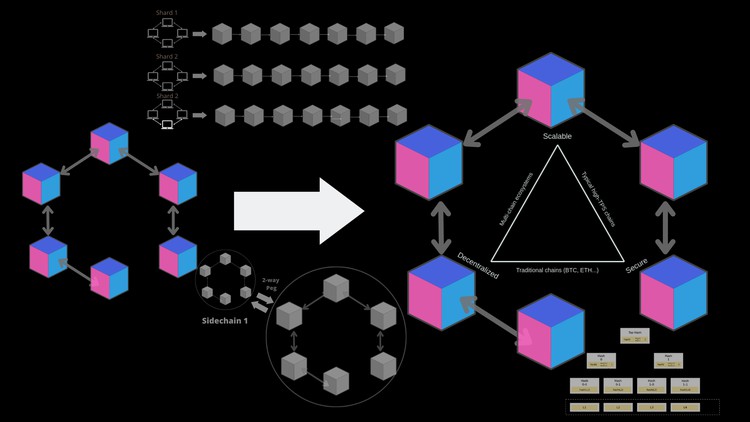
Sharding, Sidechannels, Rollups, Channels…
What you will learn
Different Types of Scaling Solutions and how they function.
Sharding
Sidechains and Plasma Chains
Rollups – Optimistic and Zero-Knowledge
Channels
Description
As per the Chainalysis State of Web3 Report June 2022 Report, cryptocurrencies with the smart contract functionality that powers DeFi and web3 now account for 45% of all blockchain transactions. This means growing demand for programmable blockchains. Ethereum is still leading but there is a multitude of problems with Ethereum. Apart from low throughput at just around 15 transactions per second compared to 1700 transactions per second for the visa network, a high gas fee creates a major bottleneck for Ethereum to drive mass adoption of web3 tech. As the gas fee does not depend on transaction value, smaller transactions are especially expensive on Ethereum as shown by the mentioned report.
Now, many emerging fields in web3 such as gaming involve frequent microtransactions creating an urgent need for blockchains that can handle higher transaction throughput at a low cost and offer security comparable to ethereum.
This brings us to scaling solutions. Various Layer-1 and Layer-2 scaling solutions are being built to keep pace with the rapidly growing web3 ecosystem. These scaling solutions come in various forms and use a multitude of technologies.
Understanding scaling solutions can be challenging because for that we need to understand the fundamental working of blockchains.
This course wants to help you understand different types of scaling solutions – from sidechain and plasma chains to rollups and shards.
So, let us get started.
As these topics can be considerably esoteric….I request you to go slow with the course material and understand one topic at a time before moving to the next one. I have added many reading material links to the videos. Please read all of them.
Content